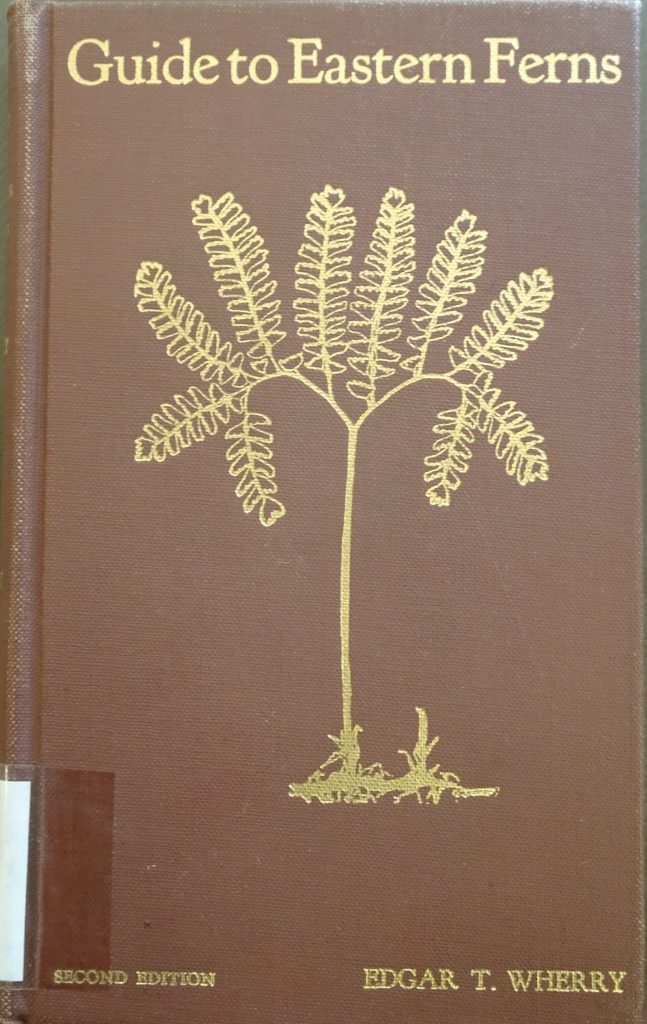In December 1945 the world was entering its fourth month of‘peace’ after six brutal years of global war.
A small sign of that ‘peace’ was the arrival in Edinburgh of a parcel containing a pocket-sized brown book. It was a Christmas gift from the wife of an American physician to the Professor of Botany at the University of Edinburgh.
In 1945 books, regardless of size, were a scarce commodity. Over seventy years later this book is still on a shelf in the reading room at the RBGE Library.
Books were subject to rationing in wartime Britain. Paper rationing was introduced in 1940 and this meant that newspapers were published with fewer pages, and magazines and journals had restricted publication patterns. The introduction of the War Economy Standard for book production saw publishers restricted to 60% of their pre-war paper usage.
Books were also recycled as part of the war effort. Some libraries benefited from this, as books donated for recycling were not pulped willy-nilly, but carefully assessed for scarcity and value by librarians.
The book sent was a copy of the second edition of Dr Edgar T. Wherry’s Guide to Eastern Ferns, published in 1942 in Lancaster, Pennsylvania by The Science Press Printing Company. The fly-leaf carries the inscription:
‘Very best wishes, Mary G. Henry, Christmas 1945’
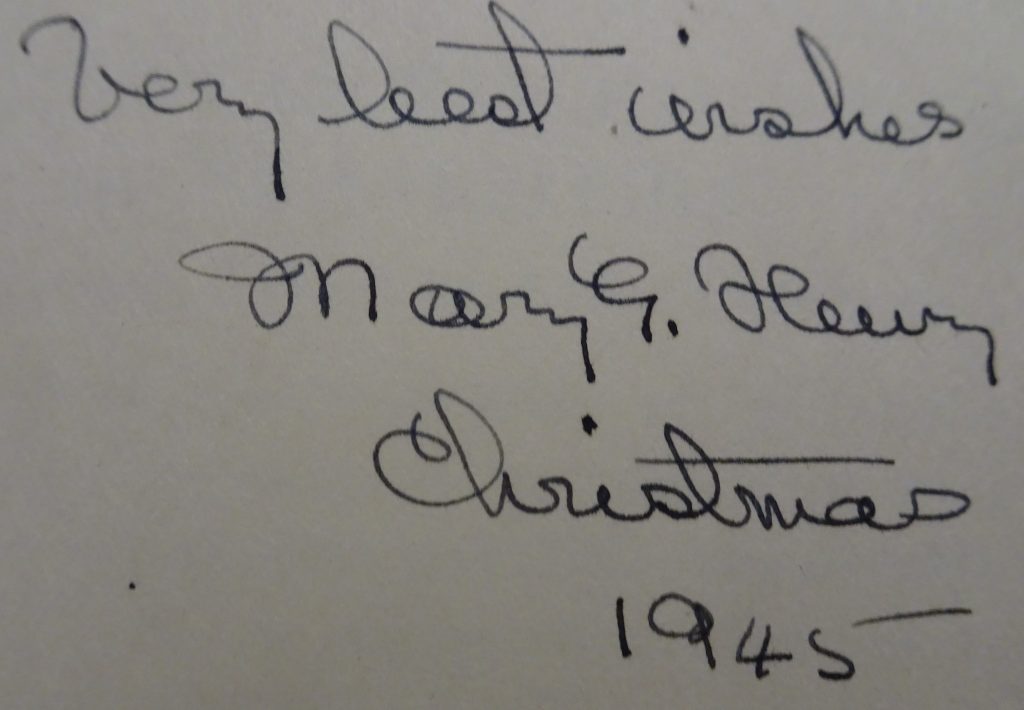
Below this inscription in purple ink is the rubber-stamp signature:
‘William Wright Smith’
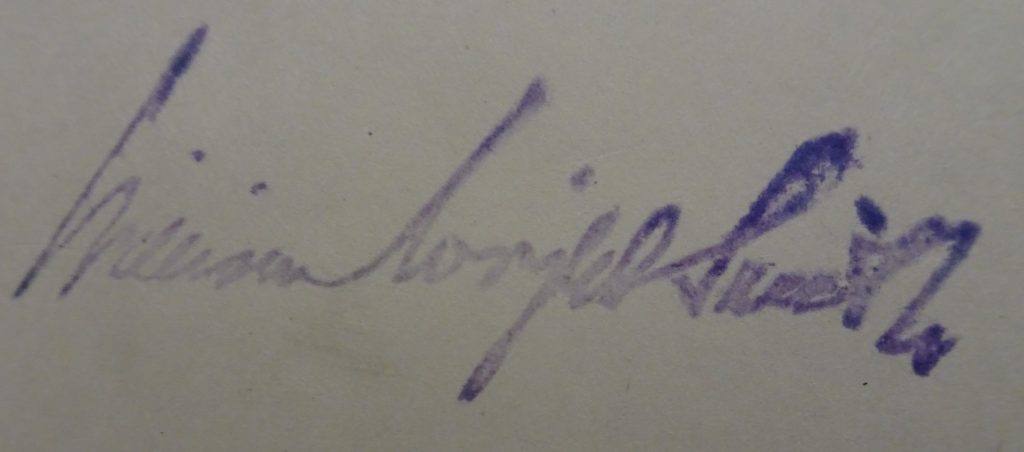
By 1945 the sender and the recipient had exchanged correspondence for over twenty years. So who were they?
Tucked away in the RBGE Library Reprints Collection is a one-page typed career summary of Mary G. Henry. This typed sheet may be only one page, but it summarises the career of a remarkably active individual.
Mary was born in Jenkinstown, Pennsylvania in 1884. It is perhaps no surprise that she would later become both a plant collector and skilled horticulturist, as her mother’s grandfather had been a founder Council member of the Pennsylvania Horticultural Society and her grandfather was a keen plantsman.
Mary also liked to explore. In 1908, during a family holiday in Europe she climbed Mont Blanc.
A year later she married John Norman Henry, a physician, who later became Philadelphia’s Director of Public Health. They had a family of five children. As their children grew up Mary ‘began exploring trips and field work, also lecturing.’
In 1919, 1925, 1926, 1928 and 1930, Mary undertook what she describes as ‘Rocky Mountain “pack trips” for botanical field work.’
Canada is the second largest country in the world and it is no surprise that it took the Canadian authorities many years to conduct topographical surveys. In 1931, 1932, 1933 and 1935, Mary and her husband planned and led expeditions in unsurveyed regions of northern British Columbia.
On the 1931 expedition she was accompanied by her husband, ‘two sons, two daughters, one surgeon, 1 topographer, 8 guides and 58 horses and mules.’ The Expedition ‘took 80 days and covered over 1000 miles of trail on horse and foot.’
In Mary’s own words, ‘The information gathered on [the 1935] trip formed the basis for the planning of the Alaska Highway.’
Whilst Mary explored she plant collected. Tucked inside a copy of a reprinted article by her, entitled ‘Exploring and Plant Collecting in Northern British Columbia,’ is a short letter dated 5th June. No year is given on the letter but as the reprint bears the date-stamp ‘Royal Botanic Garden Edinburgh, 12 Jul 1933,’ it is fair to conjecture that the letter was written in that year.
Sir William is William Wright Smith, the recipient of the book sent in 1945, and from 1922, Regius Keeper of the Royal Botanic Garden Edinburgh and Regius Professor of Botany in the University of Edinburgh.
Mary begins ‘Dear Sir William -‘
She continues:
‘This little map will be a help to anyone who is interested in where the plants came from.
If I go this year, as I hope to, we will probably fill in some of the “white places” on the map again.’
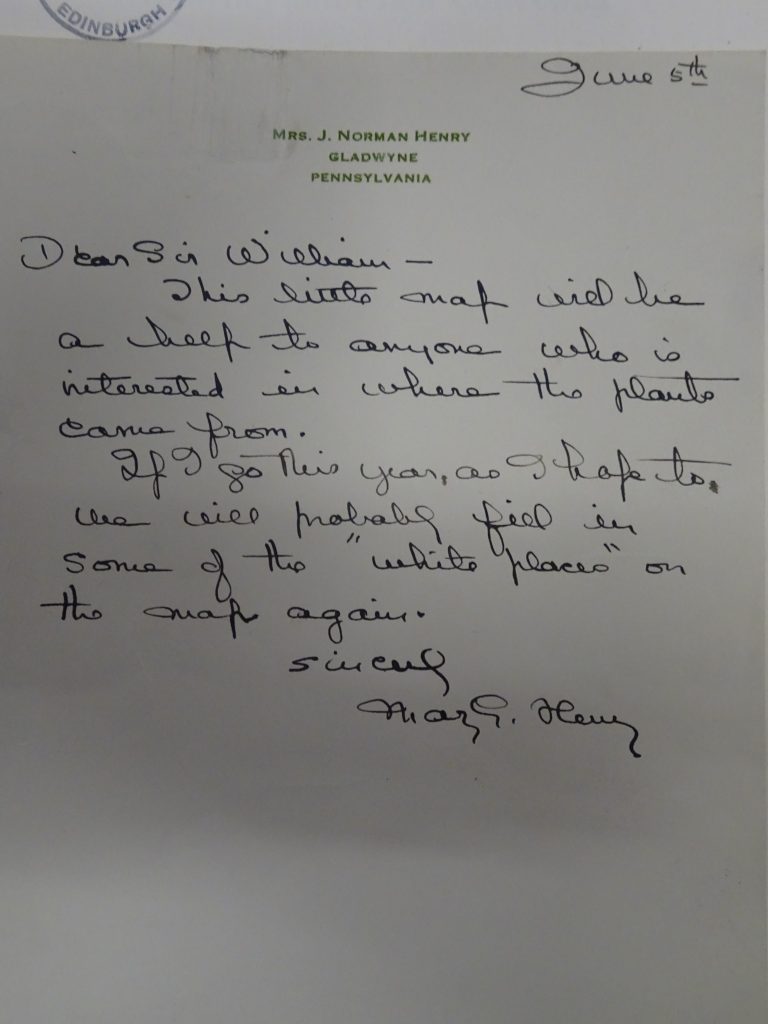
And another survivor, tucked in the same reprint is the ‘little map’ entitled ‘Exploratory Map of the Toad and Muskwa Rivers, British Columbia, by K. F. McCusker, D.LS.’ and dated 1933.
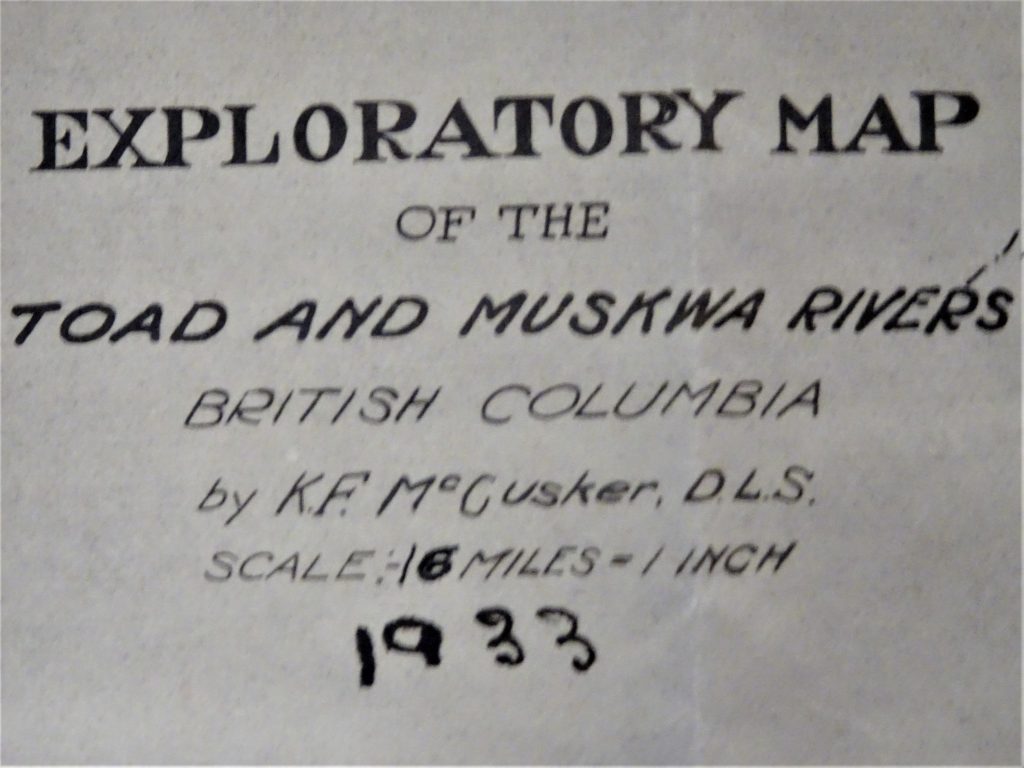
The ‘little map’ shows geographic features named for Mary and her family. Places such as ‘Mount Gibson’, ‘Lake Mary’ and ‘Lake Josephine.’
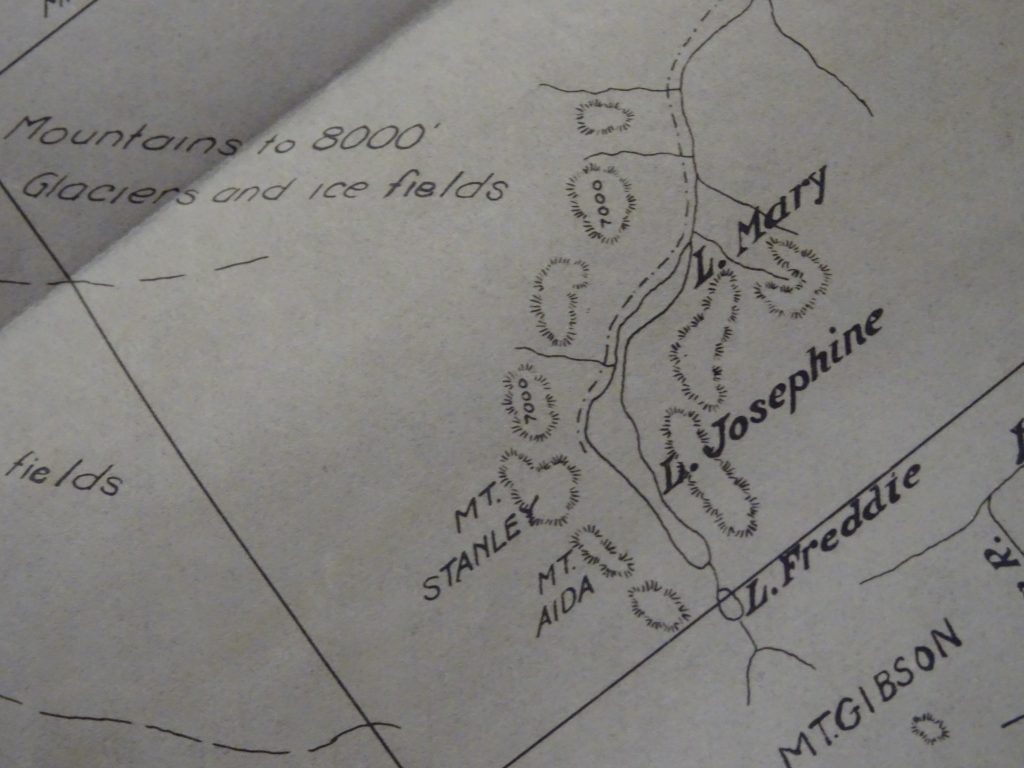
A check of the 1933 RBGE Seeds Incoming Register, reveals a record dated 3rd January, giving details of seed that Mary had sent to RBGE.
In 1927, Mary and her family had moved from Philadelphia to Gladwyne, Pennsylvania, where she began ‘serious botanical experimental work’ on a 95 acre farm. Gladwyne is now the Henry Botanic Garden, home to the Henry Foundation for Botanical Research.
We know that Mary visited Edinburgh in 1937, because she appears in a group photograph on page 16 of The Scotsman issued on 8 September 1937.
Dr J. Norman Henry, was president of the Scottish American War Memorial Association. He had commanded a base hospital during World War One. The Scottish American War Memorial is in West Princes Street Gardens. It was designed by the architect Reginald Fairlie and incorporates relief panels and the seated figure of a soldier by the Canadian sculptor, Robert Tait Mackenzie. The statue was donated by Americans of Scots ancestry as a memorial to all Scots who fought in the World War One, and unveiled in 1928.
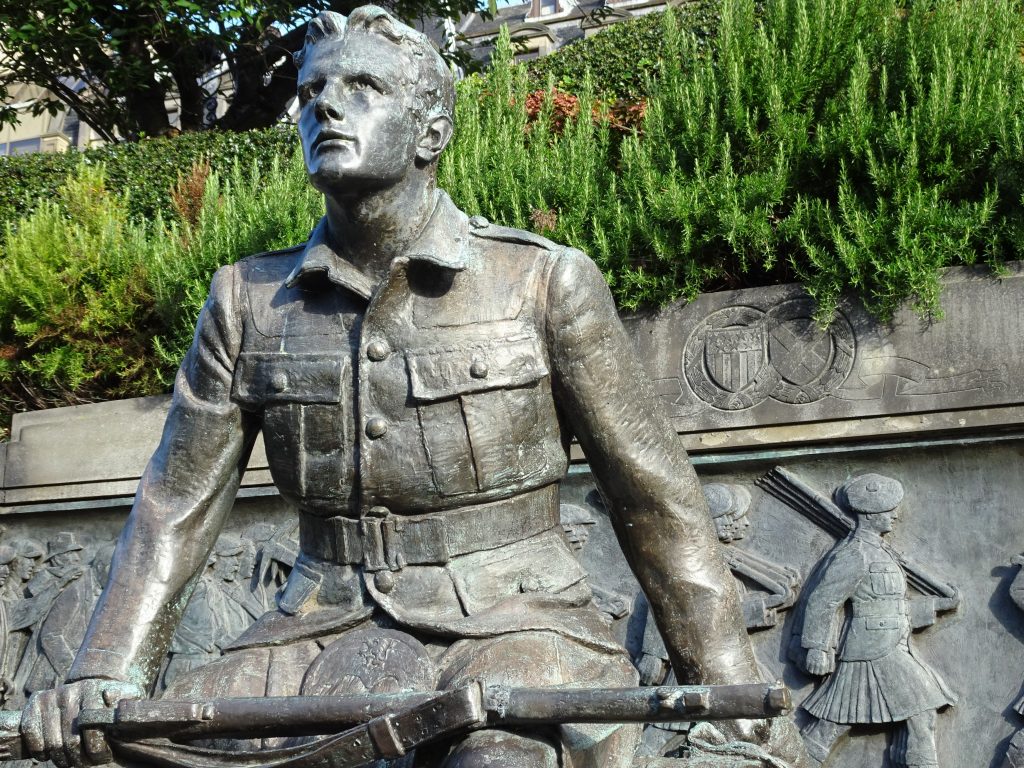
The group photograph shows Mary with her husband; the sculptor and his wife, and Ishbel, Marchioness of Aberdeen; and it was taken at the annual memorial service for that year. Dr. J. Norman Henry and Dr. R. Tait Mackenzie both died in 1938.
Mary concludes her career summary with the following paragraph:
‘In 1940 discovered a new Lily, Lilium iridollae, the first new Lily to be found on the Atlantic Coastal Plain in 105 years.’
Mary must have had a special interest in lilies as her 1946 gift to Sir William was a copy of Garden Lilies by Alan and Esther Macneil, published in 1946 by Oxford University Press, New York.
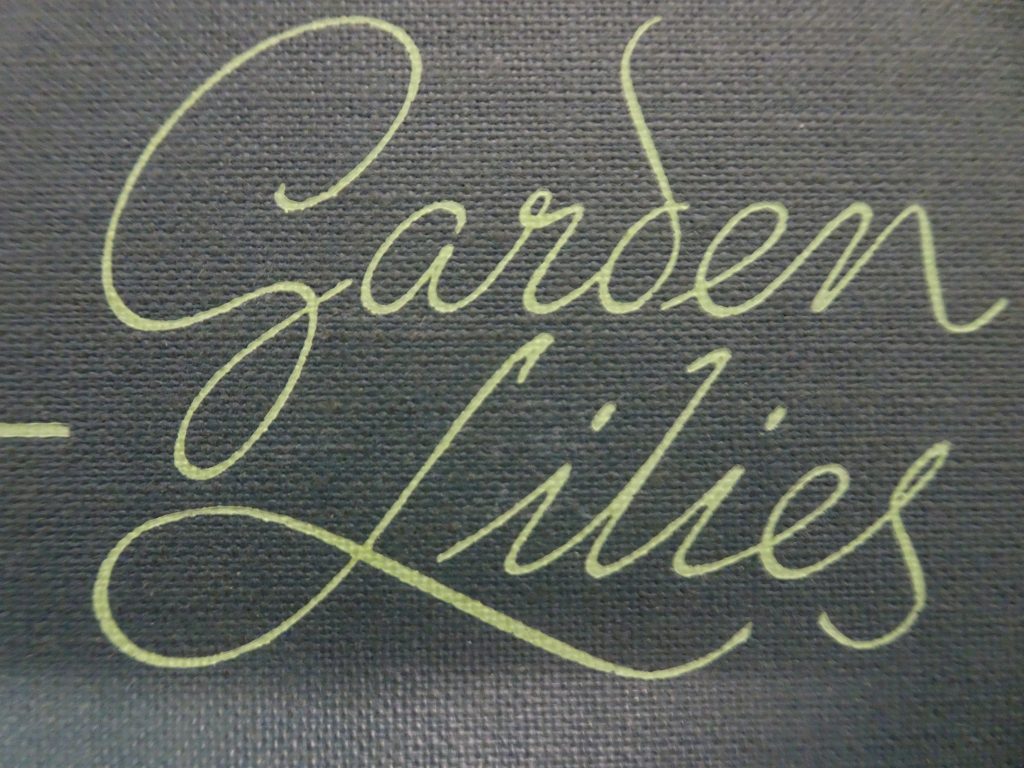
Book production restrictions and paper rationing were to remain in Britain until 1949, so it is not surprising that this OUP book was issued from New York.
Sir William must have referred to this book often, as it only left his personal library after his death in 1957. We can tell this from the date-stamp on the back of the fly leaf which reads: ‘Royal Botanic Garden Edinburgh 20 Jan 1958.’
The pocket-sized brown book hadn’t been so closley valued, as the date stamped on its inside front leaf is ‘8 Mar 1946.’
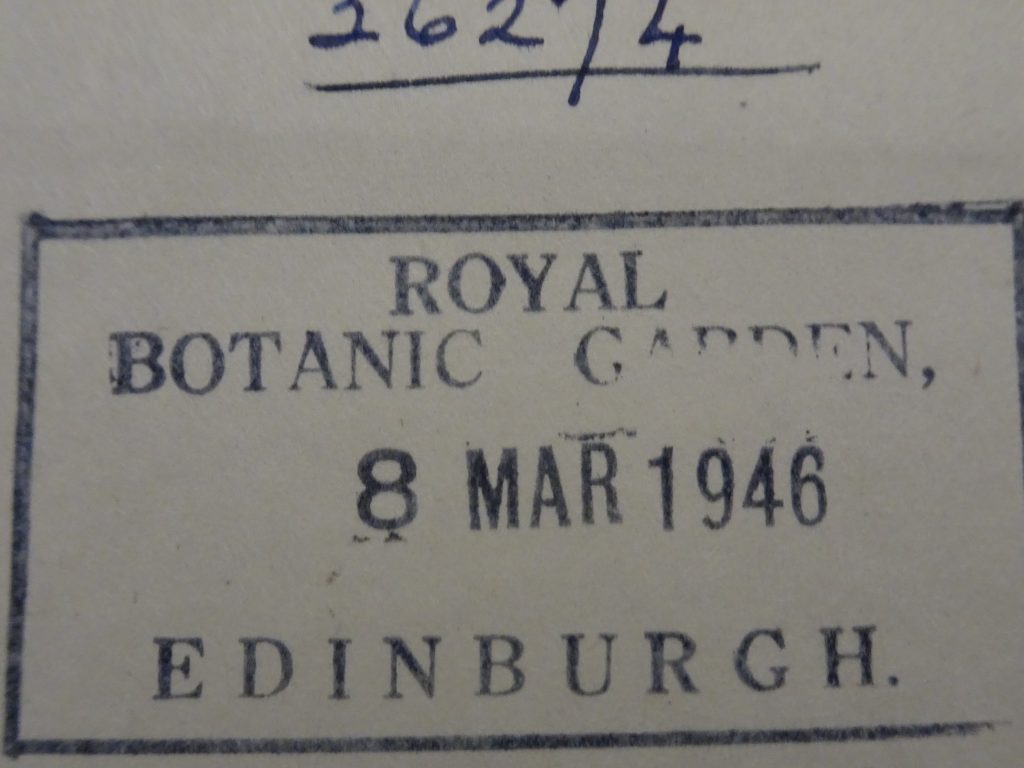
Mary came to RBGE in 1948 accompanied by her daughter Josephine. On the 11th of November, they gave a joint lecture to the Botanical Society of Edinburgh. Mary’s subject was ‘Plant Exploration in Northern British Columbia’ and Josphine spoke on insects associated with the plants described in her mother’s lecture.
In the chair that night was palaeobotanist, Dr Elizabeth M. Knox. The first woman to be appointed president of the Botanical Society of Edinburgh.
Just a few months before the start of Dr Knox’s presidency, Mary was honoured by the Botanical Society of Edinburgh, when, on 11th May 1947, they made her an Honorary Foreign Fellow. This accolade can only be held by 25 people concurrently, and Mary was the first woman to receive it.
Mary’s outlived her husband by almost thirty years, and she died aged 82 on a plant collecting trip in North Carolina. Her legacy lives on at the Henry Botanic Garden.
And the pocket-sized brown book which prompted this blogpost is returned to its shelf.
